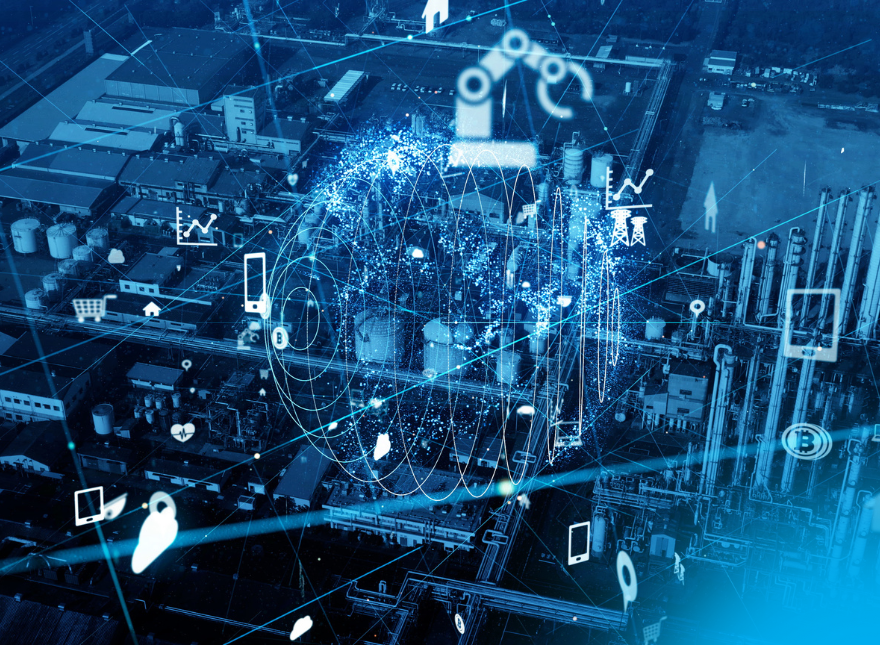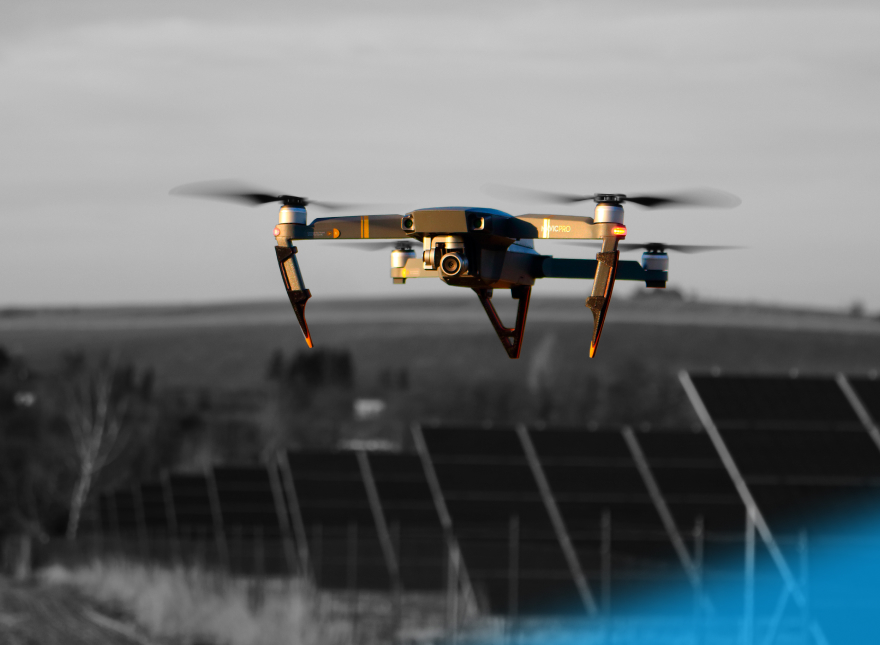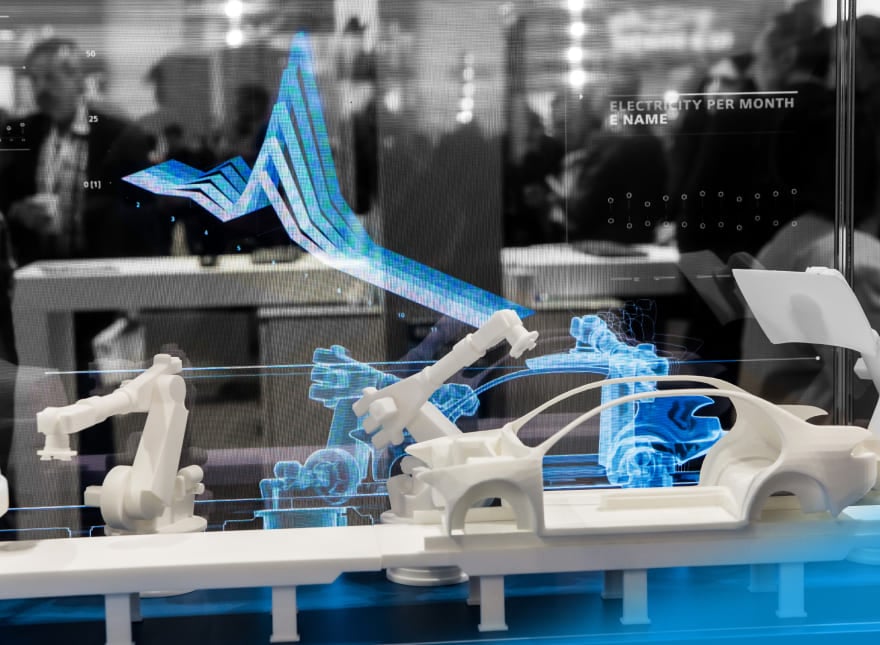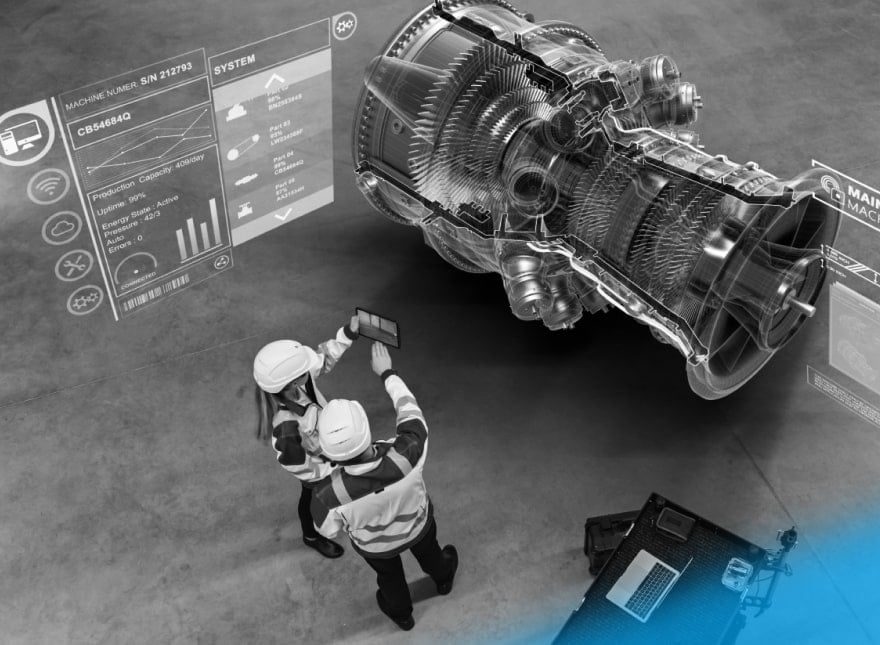Check out our latest blog article: From component to enterprise – modular robotics done right.
What Is IoT? Learn More With Practical Examples From Softeq
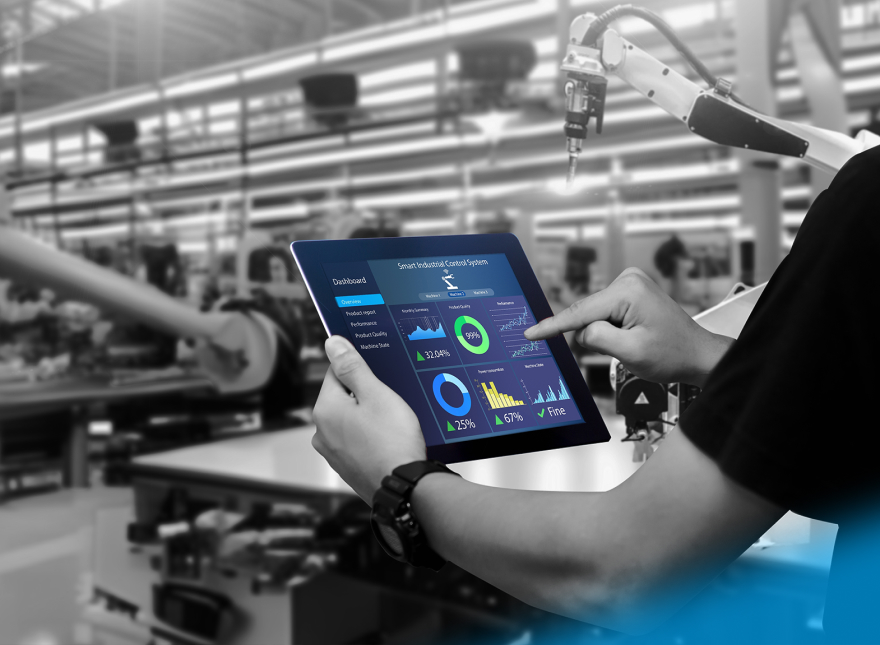
Many companies would love to use IoT. After all, it promises higher profits and improved performance. The trouble is that it all gets a bit confusing when it comes to implementation.
Some entrepreneurs hear things like “digital twins” and “artificial intelligence” and conclude that their business has nothing to do with this technology. In reality, IoT gives as much as your business is ready to digest. Whether you want to track a vehicle on a map using sensors or replace humans with robots on the factory floor, it all falls under the same IoT umbrella. Once you get the hang of the logic and concepts behind it, you’ll be more able to define the type of IoT solution that would work best for you.
In this first installment of our FAQ series of articles, Softeq will provide you with the definitions of key IoT terms. To make our explanations more useful, we’ll back them up with real-life examples from our blog and insights from our 25 years of practice. Let’s get started!
1. What Is IIoT?
Industrial IoT, or IIoT, is the application of IoT in industrial and manufacturing processes. IIoT enables a huge range of changes for your business. In a basic scenario, you might modernize legacy assets with sensors. In more advanced cases, IIoT might help totally transform your business. For example, you’ll be able to automate processes with AI and use digital twins to help increase efficiency and cut costs.
Let’s take a look at some successful IIoT examples from our blog. We’ll go from more regular to more advanced use cases.
- Smart elements in legacy equipment retrofitting. This is where many businesses start. They upgrade their original equipment with IIoT elements like sensors, connected cameras, and so on. These elements add new functionality to legacy assets at a low cost. Retrofitting allows businesses to compete on more equal terms with others using new machines.
- AI in process optimization. In the context of IIoT, AI helps analyze massive amounts of data generated by industrial devices and systems. Businesses use these insights to optimize their processes. For example, AI can help detect areas with significant energy wastage and production delays. A company can use this data to make better use of their resources and optimize their workflows. AI can also play a key role in predictive maintenance. It detects potential risks where equipment might fail and generates alerts, allowing a company to take action before a massive failure occurs. In our blog, you can find an overview of how mining companies use AI.
- Digital twins in manufacturing. A digital twin is a virtual copy of a product, feature, or process. Engineers often use them to optimize manufacturing. For example, they create a digital prototype of a product that doesn’t exist yet. This way, they can test its features, design, and materials before moving forward to create a physical version. This helps reduce testing costs and avoid errors during the production stage. Businesses can also use digital twins to simulate manufacturing processes. For example, a factory models different production plans and chooses the one that uses equipment more efficiently. This way, the company can optimize their daily performance.
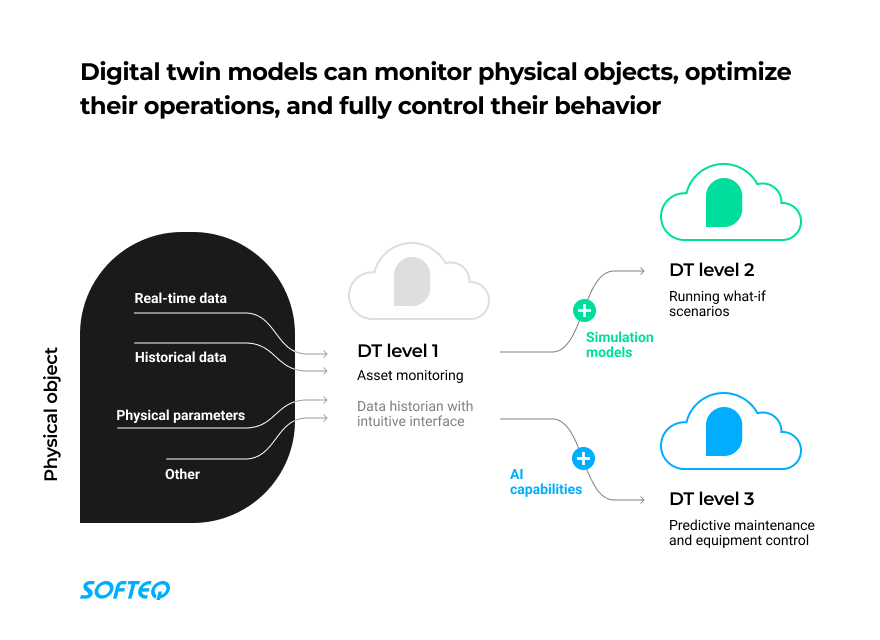
- AR in mass production. Augmented reality helps improve safety. For example, a factory can use AR for training, enabling an employee to learn to handle potential hazards in a safe environment. Another popular use case is quality control. AR algorithms overlay an image of an item that has been produced on a regular standard. If the item is different, it won’t proceed further. This way, factories avoid multiple manual checks, which allows them to make competitive products and keep the price down.
In all these examples, IIoT makes work processes more transparent. Transparency ensures more control. When you know what’s going on within your company, you can make rational decisions based on data—not assumptions.
2. How to Build an IoT Device
A successful IoT project is often born out of its founder’s deep domain expertise. Imagine a former miner who decides to build a wearable for ex-colleagues. A specialist like this would know better than anyone what kind of device would be most useful underground. Or, take a retail marketing specialist as another example. They know that customers would love to have an app that would help them navigate a huge shopping mall. The specialist can provide a detailed description of the most effective solution to real customer pain points.
However, the negative aspect of deep domain expertise may be a lack of technical skills. A manager rarely knows how to build a device and make it work, which is totally fine—we’re not jacks-of-all-trades. The best you can do is focus on your area of expertise and delegate technical development to technical experts. With hardware development, you have several options to consider:
- Use off-the-shelf solutions. This is a way to go if you have some tech knowledge. You can use an IoT development platform like AWS IoT, Google Cloud IoT, and Microsoft Azure IoT. Or, you can turn to IoT development kits with pre-built hardware and software components. These options help build an MVP without deep tech expertise. Their downside is that you are limited by the capacities a platform or development kit offers.
- Hire an experienced IoT developer or several developers. If you want to take control of hardware development, hiring personnel is a viable choice. In this case, you’d be responsible for their recruitment, onboarding, and management. However, this approach isn’t recommended if you need help with process management. Another issue you might face is building a technical team with all the necessary competencies for creating your product. If you find a hardware development expert, you can’t expect them to assist you with security or data analysis. This means that hiring in-house specialists is only useful if you have a good understanding of development-related processes.
- Partner with an IoT company. If your business lacks technical staff or you don’t want to recruit and manage specialists yourself, you can outsource this part to an IoT company. Choosing this option means you gain a technical partner. This company will build a viable product and manage the whole development cycle. Besides, many companies, including Softeq, provide business consultancy and other non-technical services. That’s why they can suggest better ways to achieve your goal.
Hiring a professional team can help you in the most unexpected ways. This is what happened in our work with Rugged Robotics. The company was working on a robot for construction sites that would mark the spots where work was to be started. Rugged Robotics wanted us to handle a particular issue—power supply optimization. So, we built a printed circuit board (PCB).
But here’s the thing: while working on the PCB, we found out that there were other costly elements that were underperforming. It went well beyond the scope of our preliminary contract, but we couldn’t help noticing that our client was paying extra for functionality they weren’t even using. We told Rugged Robotics about the problem and offered an alternative solution.
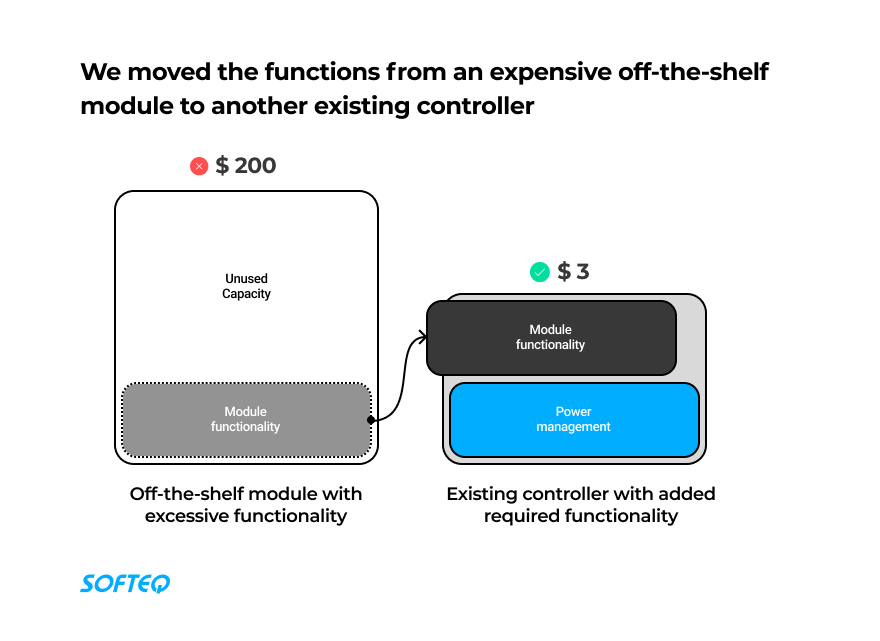
It’s up to you to choose which option works best in your particular case. However, our experience shows that contacting professionals may save you a lot in the long- and even mid-term.
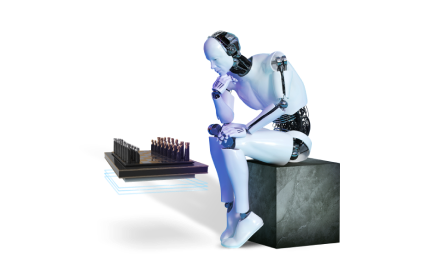
3. How to Build an IoT Application
Hardware is the backbone of an IoT project. It includes tangible elements such as sensors, chips, smart devices, and so on. To make them work in the required way, you need an IoT app. There are different types of IoT apps that fulfill different functions.
To make the most of your hardware elements, you’ll probably need firmware—program code that lives in hardware’s memory. It provides instructions that tell hardware how to function and what to do. Firmware “teaches” hardware to capture and process data, communicate with other devices, and so on. If you use equipment from different vendors, firmware applications can make them compatible. For example, some gadgets use Wi-Fi while others rely on Bluetooth. They have different connectivity protocols and don’t understand each other. Firmware helps translate these protocols so that the devices interact despite their differences.
To allow humans to interact with hardware, you need a user application. This unlocks the power of hardware for humans. In practice, a worker at a factory might be able to check equipment performance on a mobile app without needing to enter a distant and hazardous location. Or, a user might be able to turn lights on/off remotely using a smart home app.
Each IoT app type requires a specific skill set. Some businesses prefer to stick to a single team that offers expertise in every area. But that’s not always the case. Over 25 years, Softeq has seen many multi-vendor projects. They are common for a reason. Imagine a client who wants to get the best-in-class expertise in each field. They often hire different teams for different parts of IoT project development—if they can afford it. Or, if a previous vendor has failed to deliver the expected results, another team comes to the rescue and works with the existing prototype.
In either scenario, it’s harder to ensure that several teams work together smoothly. But their areas of focus are interdependent. When a hardware team makes changes to a device prototype, it will influence developers working on an IoT app. A little action in one part of the project can mix up the whole development process—the butterfly effect in action.
If you are going for a multi-vendor project, we’d recommend thinking through processes in advance. Hiring a team that has experience in multi-vendor project development can help a lot. Usually, such teams know how to be flexible without losing control over their part of the work.
4. How Is IoT Used in Business?
The main value of IoT lies in generating data around various processes and states—you can only improve what is measured. The amount of data being generated is already overwhelming, and it’s only going to keep growing. However, more data doesn’t necessarily mean improved business outcomes. Instead, it’s a business’s capacity to use this data that makes a difference.
Here are some ways to use data in IoT systems:
Tracking an asset and/or a process
You can track a unit, be it an inanimate object, a human, or an animal, once you add sensors to it. This ensures your processes are more visible.
Here’s an example from our IoT blog where we covered the use of sensors in HVAC systems. Sensors give you better control over energy consumption. When you equip HVAC systems with sensors, you can track heating, ventilation, and air conditioning in the building and adjust them. You can also keep tabs on the state of the equipment and ensure timely maintenance.
Empowering systems with AI
You can put artificial intelligence in place when you want to add automation to processes. A system like this will learn and adapt itself to changing circumstances.
Let’s take a look at an HVAC system once it has been empowered with Al. A smart HVAC system like this can adjust itself. When it’s warm outside, the HVAC system takes this into account and turns the temperature inside the building down. It can also prevent drafts by changing ventilation air flows. Another benefit is that an AI-based HVAC system can identify potential failures before they occur. This helps avoid costly downtime and the need for repair work. Plus, it also increases the equipment’s lifespan.
Building digital twins
Digital twins are widely used in manufacturing. With a digital twin, for example, a business can track the state of their product as well as how it functions and interacts with other objects. The company can run what-if simulations to see what would happen to the product in the real world under changing conditions. For example, a digital twin of a wind turbine helps test the turbine’s performance. This way, the company can learn about the turbine’s energy output, its performance under different weather conditions, and more. Such tests are much cheaper than physical prototyping.
In our blog, we covered many use cases from different industries where companies apply digital twins. The area of application can be truly diverse. In retail, digital twins create simulations of in-store customer behavior. A retailer can use these simulations to create better navigation solutions, for example. In manufacturing, digital replicas help track a production process from start to end and highlight its weak spots. Any industry can use digital twins to test new approaches and outcomes.
Deploying robots
If you can afford to acquire these high-value assets or build custom robots, they can become real game-changers.
Here’s an example from healthcare. We all know that surgeons work long hours in the operating room in stressful conditions. In these circumstances, even seasoned specialists can lose focus and commit a potentially fatal error. However, the adoption of robotic surgery is changing the game.
First of all, robots are reliable. They perform actions during surgery with the same level of precision over a long time. Second, the new generation of robots are autonomous and flexible. They can independently assess a patient’s condition during the pre-surgery stage and in the operating room. During a surgical procedure, they know how to adjust themselves when something goes wrong.
5. What Are the Benefits of IoT for Organizations?
“If you can’t measure it, you can’t improve it.” This phrase has become a motto in the IoT-empowered world.
As soon as you deploy IoT with sensors, you can collect data from any process or asset and measure it. Once you can measure a process, you can optimize it. This means that you can get more work done within the same time frame. Moreover, its output quality will be higher. The cost can remain the same or even decrease.
Here are some ways to deploy IoT:
Automation
IoT devices can automate time- and labor-intensive tasks. When you trust IoT solutions with mundane, regular tasks, your workers can focus on higher-value activities. This makes your business more competitive.
In commercial real estate, building automation systems (BASs) are good examples of IoT-empowered automation. Such a system autonomously regulates an environment in a building. It can adhere to preconfigured settings or, if it has ML tools, adjust settings depending on many conditions. It’s no wonder that tenants prefer buildings that have such capabilities. Not only are they comfortable, but they also enable companies to spend less on electricity and other bills for their offices.
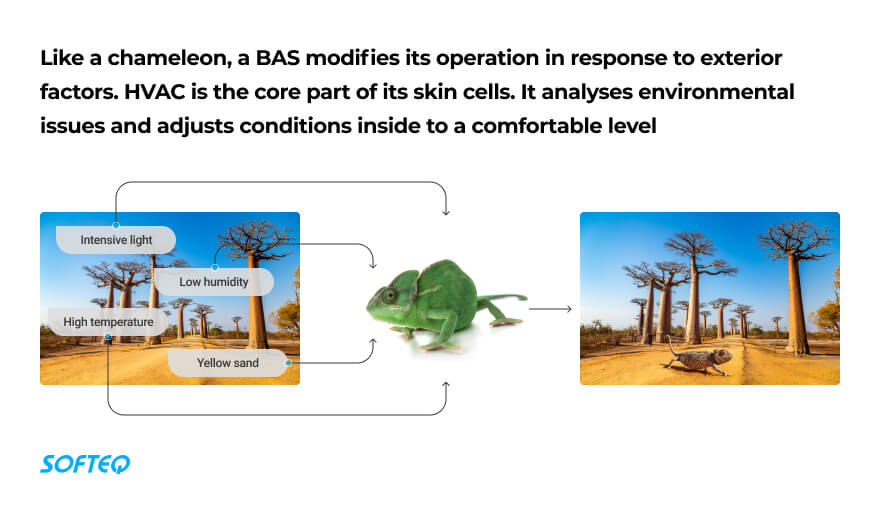
Improved customer experience
IoT can provide organizations with valuable insights into customer behavior and preferences. Businesses can use them to align their operations with customer needs and wants.
Here’s how IoT helps businesses with proximity marketing. The technology can establish communication with nearby users. Imagine a store that uses tools like beacons and geofencing. These tools can locate a customer once they approach a certain item. Then, the store can send promotions for this item straight to their mobile phone. What’s more, IoT and proximity technologies can help the customer navigate the store.
Increased safety
Safety is the focus of IoT technologies. It allows a company to stay in touch with a worker wherever they are: on the road, underground, or in the air. The company can also track the worker’s health metrics. This all means that managers have the tools to warn workers about real or potential risks. Meanwhile, the worker can ask for help at any moment and expect to receive assistance.
The construction industry is well-known for a high number of accidents. To change this trend, companies equip their employees working on-site with wearables. These can be smart helmets that communicate when a worker is too tired and needs a rest or smart eyewear that displays navigation instructions on the lenses.
Increased equipment lifespan
Equipment in industrial sectors is expensive, so businesses expect it to last for around 10 to 15 years or more. They can’t replace assets that cost millions of dollars too frequently. Instead, they prefer to maintain equipment, carry out small repairs, and prevent large-scale problems. IoT helps them detect areas where something can go wrong. This means they can take action in advance with preventive checkups and fine-tuning. Assets last longer as a result, while the cost of maintaining them gets cheaper.
Smart prediction is very popular among oil and gas companies. AI-based systems detect the very first signs of abnormalities. Then, they alert staff about potential risks so that they can intervene before equipment failure occurs. For companies where the cost of equipment amounts to millions of dollars, such solutions provide huge economic value.
Bottom Line
That was the first installment of our FAQ articles where Softeq provides a short and simple overview of IoT solutions. In the upcoming articles, we’ll continue to guide you through the logic of the Internet of Things. Our ultimate aim is to help you recognize the potential value of IoT for your business and provide some ideas about how you can implement it. Feel free to share these examples and insights with others.
In the meantime, don’t forget to subscribe to our blog and get more practical information about how IoT can help you.
More articles on the topic
